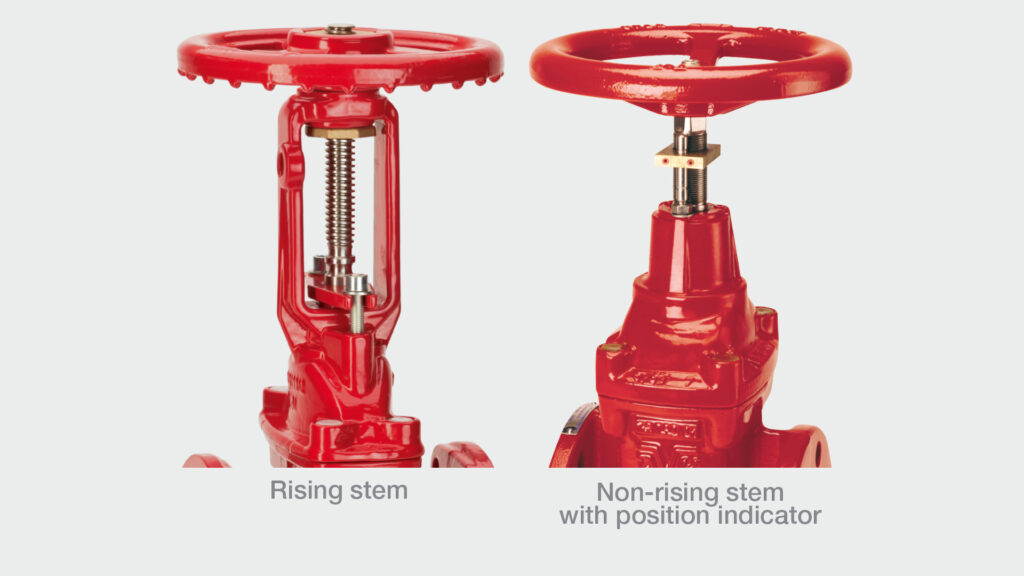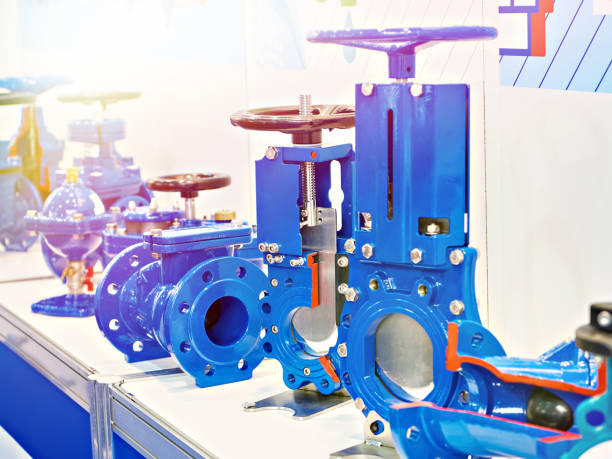
The gate valve is used in a wide range of applications. It is usually used for water supply lines with a nominal DN 50 or greater diameter.
What are the Types of Gate Valves?
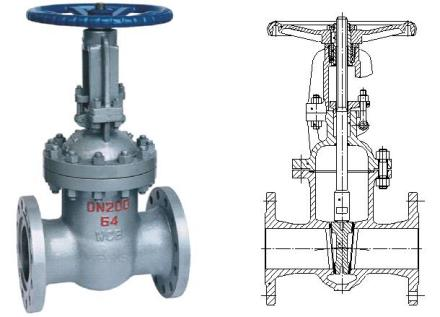
Domestic production of gate valve manufacturers is relatively large, and the connection size is mostly not uniform.
1. Gate valves can be divided into wedge type and parallel type according to the different structures of the gate. The wedge-type gate valve has three forms: single gate, double gate, and resilient gate.
Wedge Type Gate Valve
A wedge gate valve is a kind of gate valve. So it is named because its sealing surface and the vertical centerline make some angle, that is, the two sealing surfaces into a wedge shape. In general, the angle between the sealing surface and the vertical centerline of the two sealing surfaces into a wedge-shaped gate valve is 2°52′, 3°30′, 5°, 8°, 10°, etc. The wedge gate valve is divided into a rising stem gate valve and a non-rising stem gate valve, a wedge-shaped single gate valve, and a wedge-shaped double gate valve.
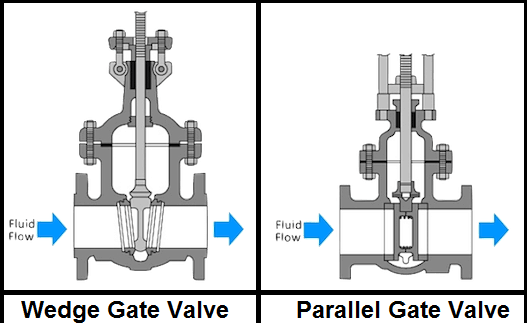
Parallel type Gate Valve
Parallel gate valves have two sealing surfaces perpendicular to the axis of the pipe, i.e., they are gate valves with two sealing surfaces parallel to each other.
A parallel gate valve is a sliding valve with a parallel gate closing member. The closing member can be a single or double gate with a spreading mechanism between them. The gate pressure on the seat is controlled by the medium acting on the floating gate or floating seat. In the case of a double gate parallel gate valve, this force is supplemented by a spacer mechanism between the two gates.
2. Depending on the type of structure, gate valves can be divided into flat gate valves and knife gate valves.
flat gate valve
The flat gate valve is a sliding valve with a parallel gate as the closing element. The closing member can be a single or double gate with an interlocking mechanism. The compression force of the gate seat is controlled by the medium pressure acting on the floating gate or floating seat. In the case of a double gate flat gate valve, this force is supplemented by a spreader mechanism between the two gates.
The flat gate valve can be divided into manual flat gate valve, pneumatic flat gate valve, and electric flat gate valve according to the driving mode. Furthermore, according to the purpose and use, the gate valve can be divided into guide plate gate valve, non-guide plate gate valve, oilfield plate gate valve, pipeline plate gate valve, gas plate gate valve, etc.
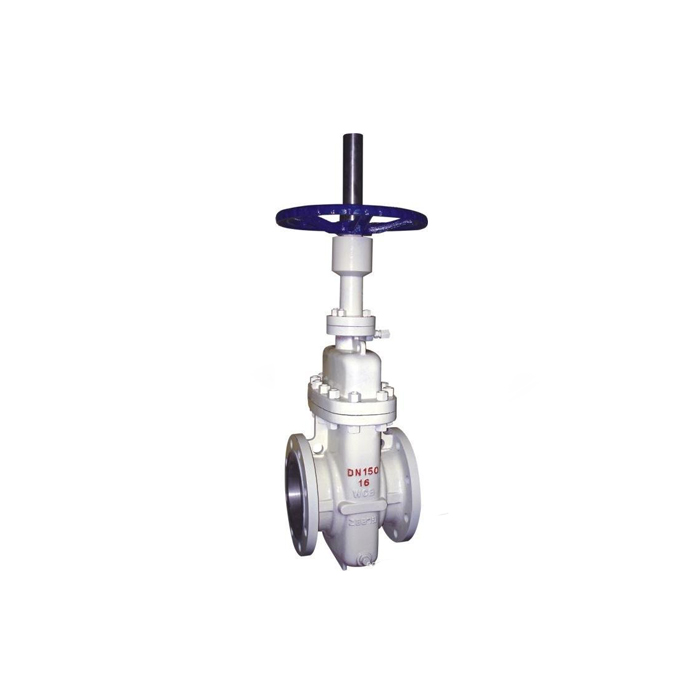
knife gate valve
The opening and closing member of the knife gate valve is the gate. The direction of motion of the gate is vertical to the direction of the fluid. The gate valve relies on a knife blade gate that can cut fiber material off the medium. The gate has two sealing surfaces; the most common pattern is wedge-shaped. The wedge angle varies with the valve parameters and is usually 5°. It can make the gate of a wedge-type knife gate valve into a single unit, called a rigid gate. You can also make it into a gate that can produce a small deformation to improve its processability. It can make up for the deviation of the sealing surface angle in the process, this kind of gate is called the resilient gate. The valve body does not have a chamber. Instead, the gate is raised, lowered in the side guide groove, and pressed against the seat by the bottom lug. We can use O-ring seats to achieve bi-directional sealing for high media tightness. The installation area of knife gate valve is small. It has low working pressure, is not easy to accumulate debris, and is less expensive.
When the knife gate valve is closed, the sealing surface can rely only on the medium pressure to seal. That is, it depends on the medium pressure to press the sealing surface of the gate plate to the other side of the valve seat to ensure the sealing surface is self-sealing. Most gate valves are forced to seal. In other words, when the valve is closed, it depends on the external force to force the gate plate to the seat to ensure the sealing surface of the seal. Therefore, it should generally install this type of valve in the pipeline vertically.
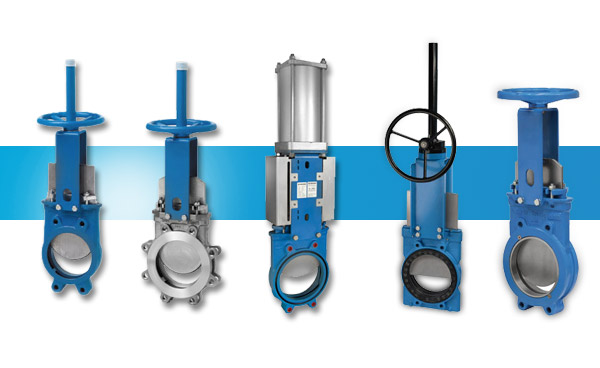
- The gate valve can be divided into an electric gate valve, pneumatic gate valve, and manual gate valve according to the driving method.
Electric Gate Valve
An electric gate valve simply means that an electric actuator controls the valve to realize the opening and closing of the valve. It can be divided into two parts: upper and lower. The upper part is the electric actuator, and the lower is the valve. It can adjust the speed of the electric gate valve switching action. It is simple in structure and easy to maintain. And it is not easy to be damaged by jamming during the move because of the buffering characteristic of the gas itself. But there must be a gas source, and its control system is more complicated than other electric valves. Nevertheless, the electric gate valve is responsive, safe, and reliable.
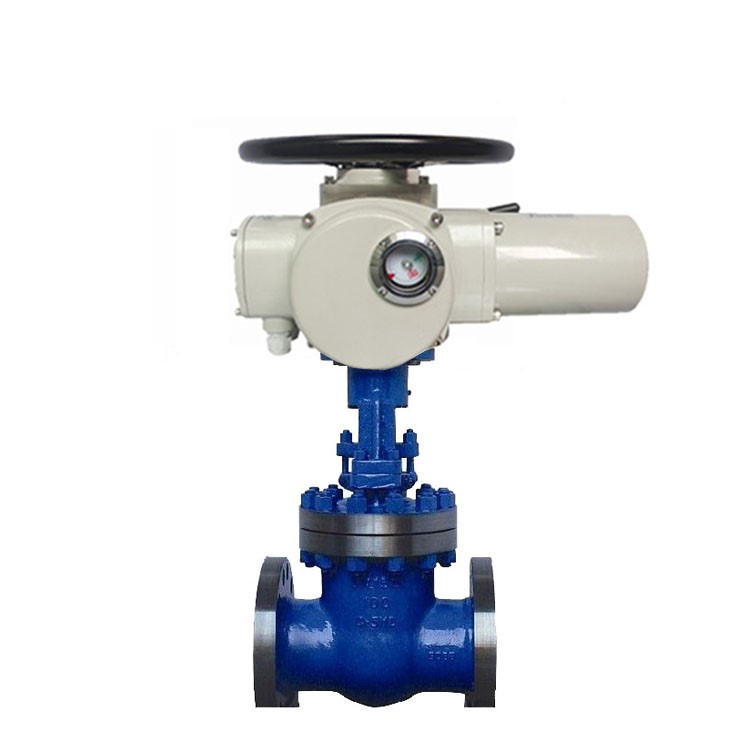
Pneumatic Gate Valve
The pneumatic gate valve is the valve that the closing member (gate) moves in the vertical direction along the center line of the pathway. Pneumatic gate valves in the pipeline can only be used for full open and full off and can not be used for regulation and throttling. Therefore, a pneumatic gate valve is a valve with a wide range of use.
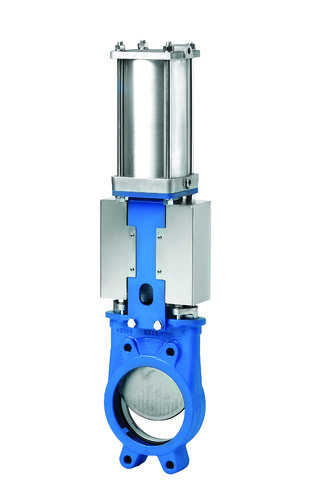
Manual Gate Valve
A manual gate valve is a common type used on equipment and installations. The handle and handwheel operate it. Generally, the clockwise rotation of the handle and handwheel is specified as the closing direction, and the counterclockwise rotation is defined as the opening direction. However, some valves open and close opposite the above; we should focus on checking the opening and closing signs before operation.
The valve can be opened and closed by turning the handwheel and the threaded entry and exit of the valve stem and by raising or lowering the valve plate connected to the valve stem.
- Gate valve stem is divided into rising stem (lifting shaft) and non-rising stem (rotary shaft) according to the form of movement.So the gate valve is divided into two kinds: rising stem gate valve and non-rising stemgate valve.
Rising stem gate valve
The handwheel (or another driving device) is fixed on the stem nut. When the handwheel (or another driving device) rotates the stem nut, the stem will move up and down, thus driving the gate valve for lifting movement and opening and closing the pipeline.
When the rising stem gate valve is opened, the stem extends from above the handwheel, which can directly show the opening degree of the gate valve. The stem trapezoidal thread is in the upper part of the stem. It is not in direct contact with the medium and is not corroded by the medium, and the section lubricates all aspects. Therefore, it is suitable for corrosive media, foul media, and high-temperature steam media. The valve’s degree of opening and closing can be seen directly from the thread, and the ease of operation is also one of its advantages. The disadvantage is that, due to the thread leakage, it is easy to stick to the dust in the air and accelerate the tread wear, so you should install it indoors as much as possible. Nevertheless, it is still more widely used.
Non-rising stem gate valve
The handwheel (or another driving device) is fixed on the stem. And the stem thread is set on the top of the gate. When the handwheel (or another driving device) rotates, the stem threads drive the gate for lifting motion. The stem can only do the rotational movement. The advantage is that the stem does not rise when opening and the installation space required is small. Therefore, it is often used as a significant passage gate valve or where the installation space is limited. However, since the stem does not lift, it cannot show the degree of opening by the length of the stem extension, like the open stem gate valve. Therefore, it should be equipped with an openness indicator.
The threaded part of the stem and stem nut of the non-rising stem gate valve is in contact with the medium inside the valve cavity. Therefore, it is vulnerable to media corrosion. Also, the stem threads are challenging to be lubricated.
